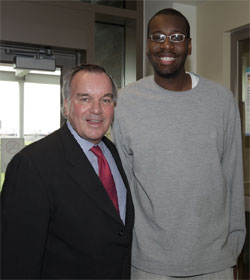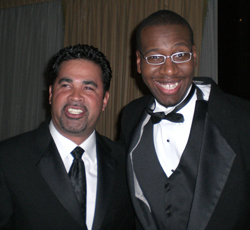Montana 10th state to sign autism insurance bill into law
by Katy Beh Neas
Montana just became the tenth state in the country to pass autism insurance legislation that requires insurance companies to pay for treatment for children with autism. Easter Seals Goodwill Northern Rocky Mountain was intimately involved in passage of the bill.
Known as “Brandon’s Bill,” the legislation was signed last Tuesday, May 5th. In attendance at the signing ceremony were Laura Simonson with her son Brandon, a five-year-old with autism, and Shelley Oksness, senior vice president of program development for Easter Seals Goodwill Northern Rocky Mountain. Brandon received P.L.A.Y. therapy from Easter Seals Goodwill Northern Rocky Mountain.
Easter Seals Goodwill Northern Rocky Mountain worked with legislators, coalition partners like Autism Speaks and the Autism Society of America, parents and supporters. What began as a grassroots campaign of parents and providers ended as a new law. Governor Brian Schweitzer talked about his personal connection to the bill, raising a child with autism himself.
The new law requires that insurance companies cover up to $50,000 per year in coverage for children up to 9 years old, and up to $20,000 per year for services for children 9 through 18 years old.







 In all the excitement of meeting White Sox players last week, and going to that White Sox game, I forgot to mention one very important thing in
In all the excitement of meeting White Sox players last week, and going to that White Sox game, I forgot to mention one very important thing in 